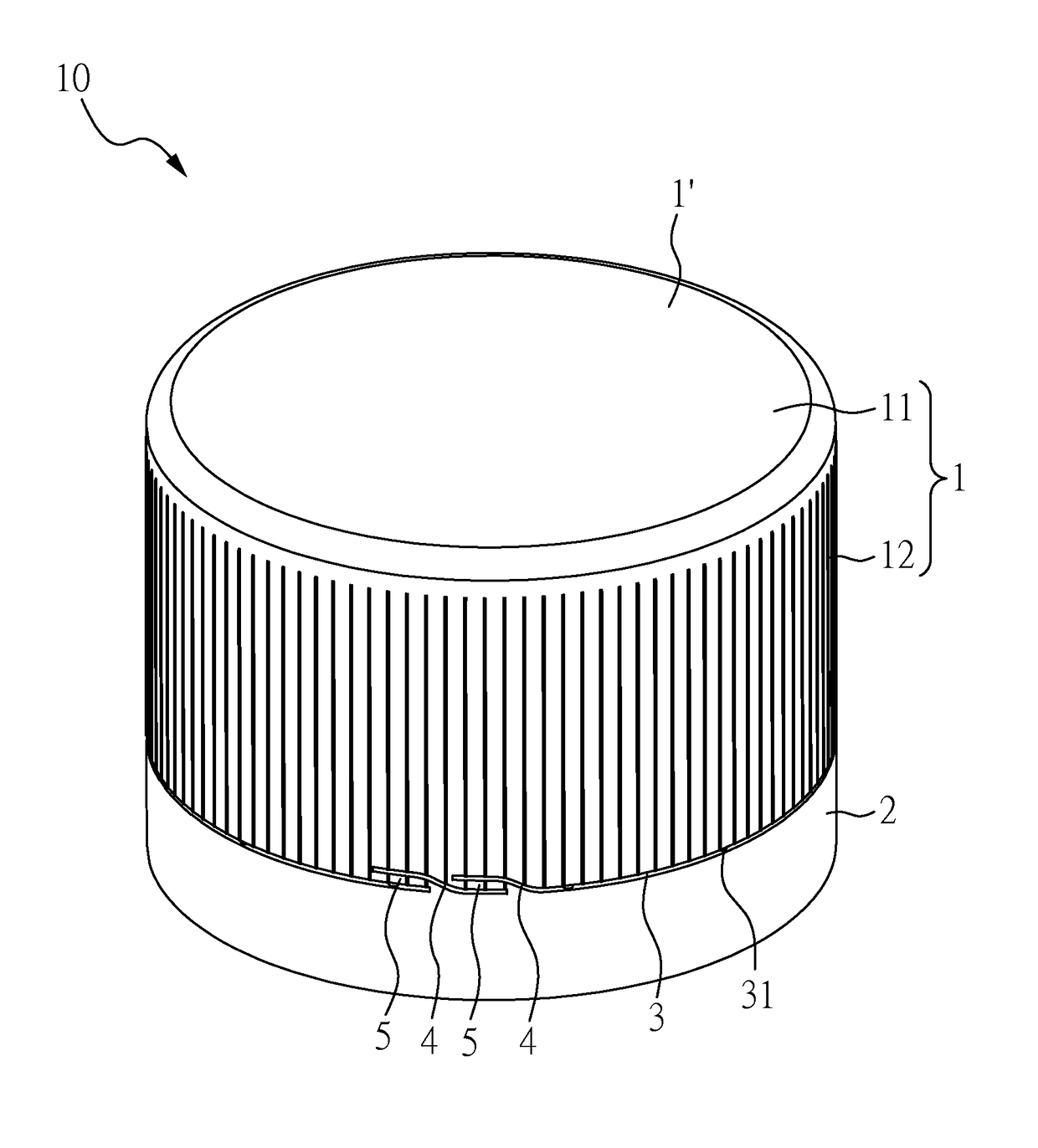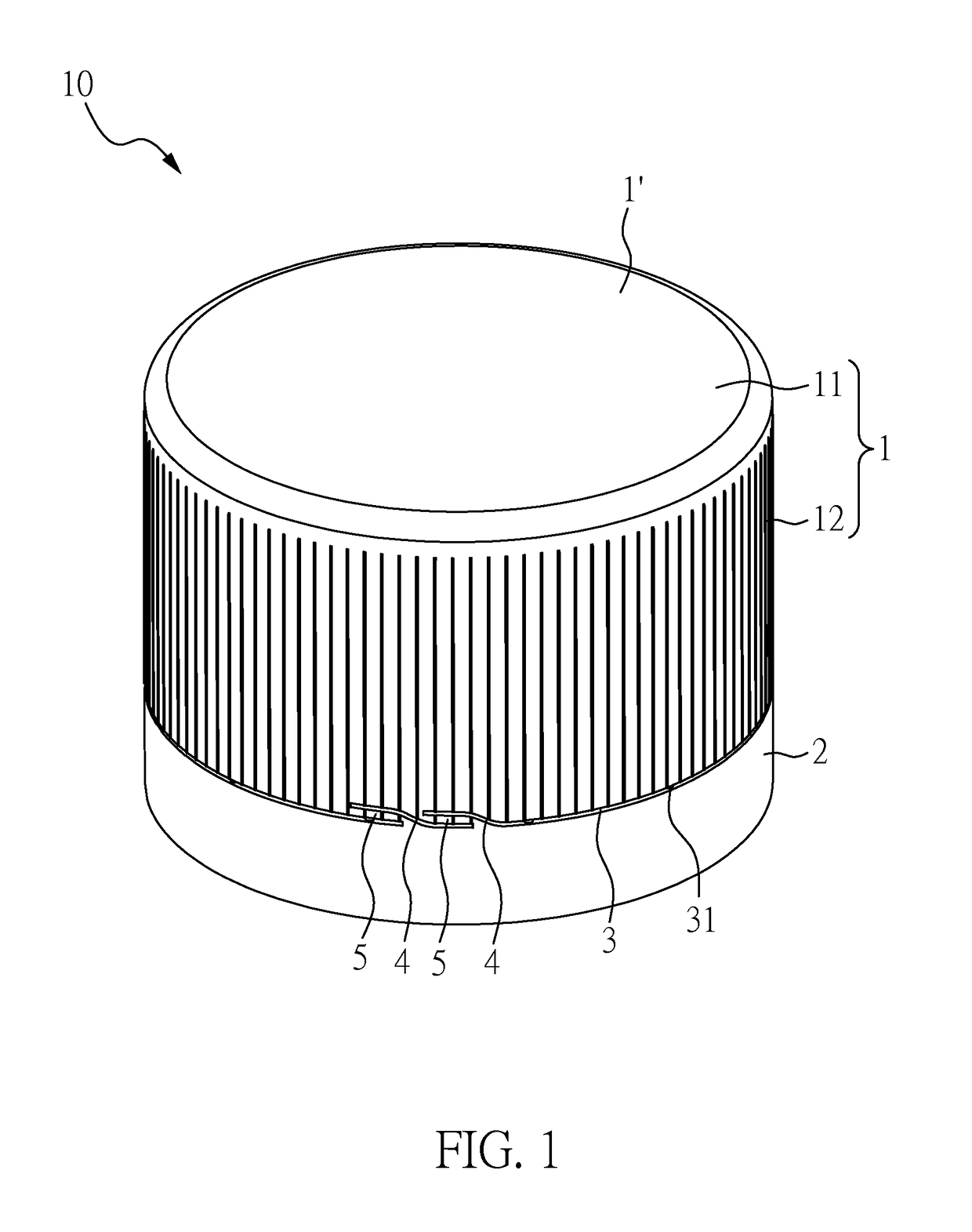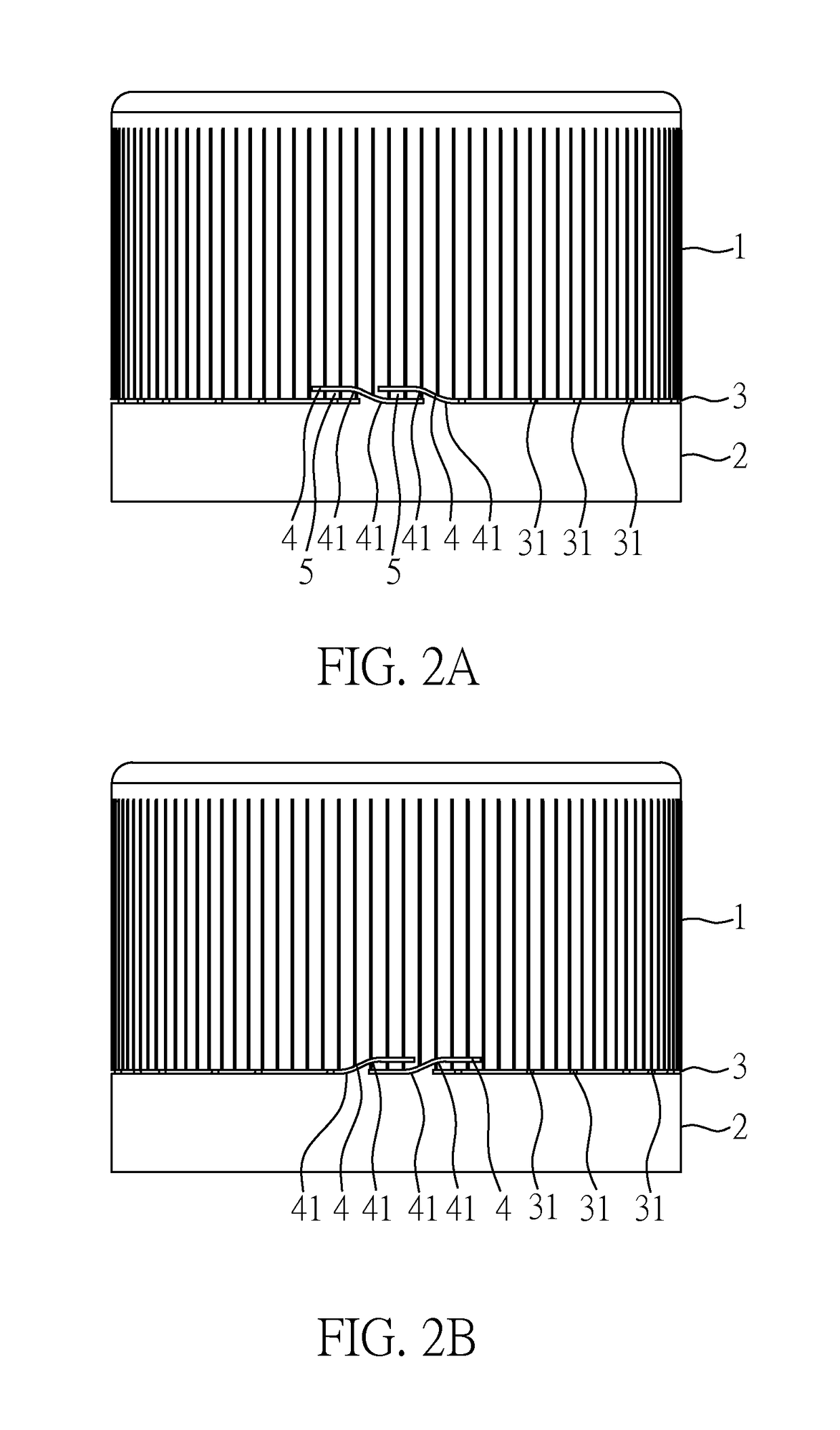Cap for container
a container and cap technology, applied in the field of caps, can solve the problems of cap becoming no longer reusable, easy to drop the separated cap, accidental disposal, misplacement/lost, etc., and achieve the effect of simple design and structur
- Summary
- Abstract
- Description
- Claims
- Application Information
AI Technical Summary
Benefits of technology
Problems solved by technology
Method used
Image
Examples
example 1
[0026]FIG. 1 is a three-dimensional schematic diagram showing an embodiment of the cap for a container of the present invention. As FIG. 1 shows, the cap 10 of the present example includes a main body 1 having a top plate 11 and a circular sidewall 12. The two opposite sides of the circular sidewall 12 circularly connect to each other. One periphery of the circular sidewall 12 connects to one surface of the top plate 11 forming a closed end 1′. The other periphery of the circular sidewall 12 at the opposite side of the closed end 1′ forms an opened end 1″ (shown in FIG. 3). The cap 10 of the present example also contains a ring member 2, which is located at the opened end 1″ of the main body 1. The ring member 2 is separated from the main body 1 by a first incision line 3 located in between the opened end 1″ of the main body 1 and the ring member 2. The first incision line 3 possesses a plurality of connecting pins 31. The plurality of connecting pins 31 located along the first inci...
example 2
[0031]FIG. 2B is a schematic diagram showing another embodiment of the cap for a container of the present invention. The cap of the present example and the cap of example 1 are the same except that the plurality of second incision lines 4 and the plurality of second incision lines 4 shown in FIG. 2A are opposite to each other. Nevertheless, the opening directions of the cap and that of the cap shown in FIG. 2A are still the same (both are in the anti-clockwise direction; that is rotation in the right direction in FIG. 2A or FIG. 2B).
example 3
[0032]FIG. 2C is a schematic diagram showing another embodiment of the cap for a container of the present invention. The cap of the present example and the cap of example 1 are the same except that only the ring member 2 possesses the plurality of second incision lines 4 and the plurality of second incision lines 4 surround less than ⅕ of the ring member 2.
PUM
| Property | Measurement | Unit |
|---|---|---|
| shape | aaaaa | aaaaa |
| lengths | aaaaa | aaaaa |
| length | aaaaa | aaaaa |
Abstract
Description
Claims
Application Information
 Login to View More
Login to View More - R&D
- Intellectual Property
- Life Sciences
- Materials
- Tech Scout
- Unparalleled Data Quality
- Higher Quality Content
- 60% Fewer Hallucinations
Browse by: Latest US Patents, China's latest patents, Technical Efficacy Thesaurus, Application Domain, Technology Topic, Popular Technical Reports.
© 2025 PatSnap. All rights reserved.Legal|Privacy policy|Modern Slavery Act Transparency Statement|Sitemap|About US| Contact US: help@patsnap.com



